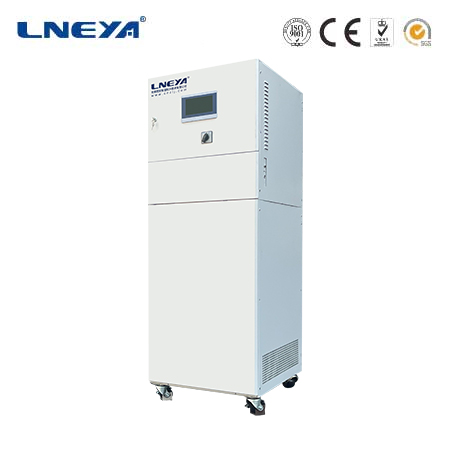small lab chiller
What Is a Small Lab Chiller?
A small lab chiller is a specialized cooling device used in laboratories to regulate the temperature of scientific equipment and experiments. Unlike industrial chillers, these units are designed for compact spaces while delivering precise temperature control. They work by circulating a coolant (usually water or a water-glycol mixture) through a closed loop, absorbing heat from connected devices and dissipating it via a refrigeration cycle.

How Does a Small Lab Chiller Work?
Coolant Circulation: A pump moves coolant through tubing connected to the lab equipment.
Heat Absorption: The coolant absorbs excess heat from the device (e.g., a laser or reactor).
Refrigeration Cycle: The heated coolant passes through an evaporator, where a refrigerant removes the heat.
Heat Dissipation: A condenser releases the absorbed heat into the environment.
Temperature Regulation: A thermostat maintains the desired temperature by adjusting cooling intensity.
Key Features of Small Lab Chillers
Compact Design: Fits easily on benchtops or under workstations.
Adjustable Temperature Range: Most models operate between -20°C and 40°C, suitable for diverse applications.
Low Noise Levels: Engineered for quiet operation in shared lab spaces.
Energy Efficiency: Uses advanced compressors and insulation to minimize power consumption.
User-Friendly Controls: Digital interfaces allow precise temperature adjustments and monitoring.
Common Applications
Chemistry Labs: Cooling reactors, condensers, and rotary evaporators.
Biology & Medical Research: Maintaining temperatures for PCR machines and bioreactors.
Pharmaceuticals: Stabilizing drug synthesis processes.
Material Science: Controlling temperatures during polymer testing.
Electronics Testing: Preventing overheating in laser diodes and microscopy systems.
Choosing the Right Small Lab Chiller
When selecting a small lab chiller, consider:

Cooling Capacity: Measured in watts (W) or BTU/hr, it should match the heat load of your equipment.
Temperature Range: Ensure the chiller can reach and maintain your required temperatures.
Pump Flow Rate: Higher flow rates (measured in L/min or GPM) improve heat transfer efficiency.
Compatibility: Verify connections (hose fittings, tubing size) match your lab setup.
Portability: Some models include wheels or handles for easy relocation.
Maintenance Tips
Regular Cleaning: Dust and debris can clog air filters and reduce efficiency.
Coolant Replacement: Replace or top up coolant periodically to prevent corrosion and bacterial growth.
Inspect Tubing: Check for leaks or cracks in circulation lines.
Calibration: Periodically verify temperature accuracy with a calibrated thermometer.
Advantages Over Alternative Cooling Methods
Precision: Offers tighter temperature control than ice baths or fans.

Consistency: Maintains stable cooling without manual intervention.
Safety: Reduces risks associated with extreme temperatures (e.g., dry ice or liquid nitrogen).
Conclusion
Small lab chillers are essential for laboratories requiring reliable, precise temperature control. By understanding their functionality, features, and maintenance needs, researchers can optimize experimental outcomes and extend equipment lifespan. Whether for chemical synthesis, biological assays, or electronics testing, a well-chosen lab chiller enhances efficiency and reproducibility in scientific work.
Related recommendations
water cooled chiller operation
397Water-Cooled Chiller Operation: An In-Depth Analysis Water-cooled chiller systems are integral to HVAC processes in various industries, providing essential cooling for equipment and spaces. The...
View detailsconstant temperature water heater
390Introduction to Constant Temperature Water HeatersConstant temperature water heaters, also known as water baths, are vital in laboratories for maintaining a consistent temperature for processes su...
View detailscooling products
260Cooling Products: A Comprehensive OverviewIn a world where temperature control is crucial, cooling products play a pivotal role in maintaining comfort, efficiency, and functionality across variou...
View detailsgerman chiller manufacturer
659German Chiller Manufacturer: Innovation, Quality, and Sustainability Germany's engineering prowess extends to the chiller manufacturing industry, with several companies leading the way in innov...
View details
 LNEYA Thermal Test Chillers
LNEYA Thermal Test Chillers






HelloPlease log in